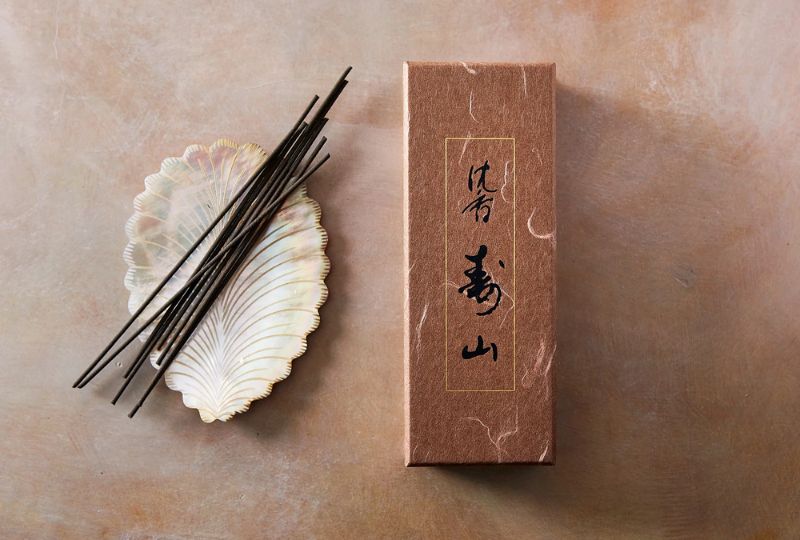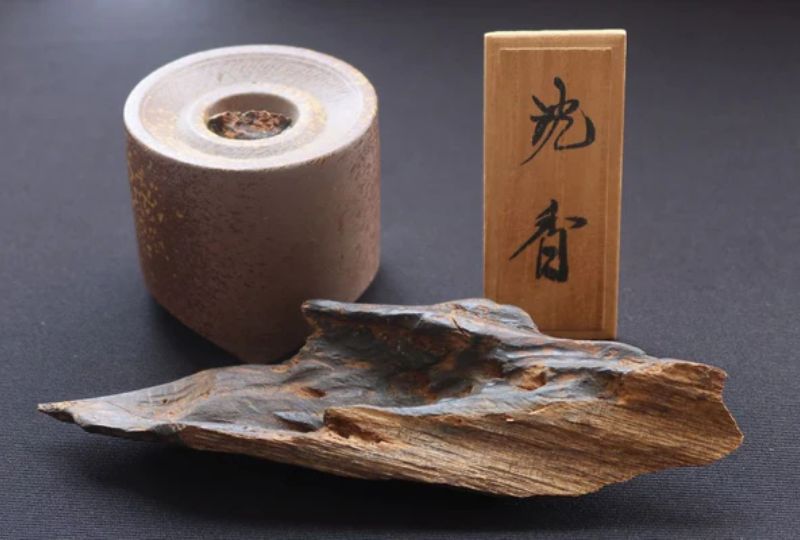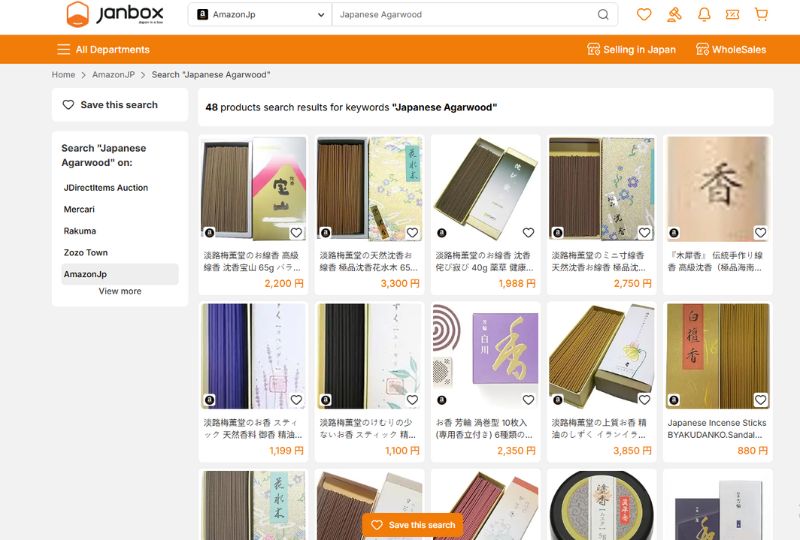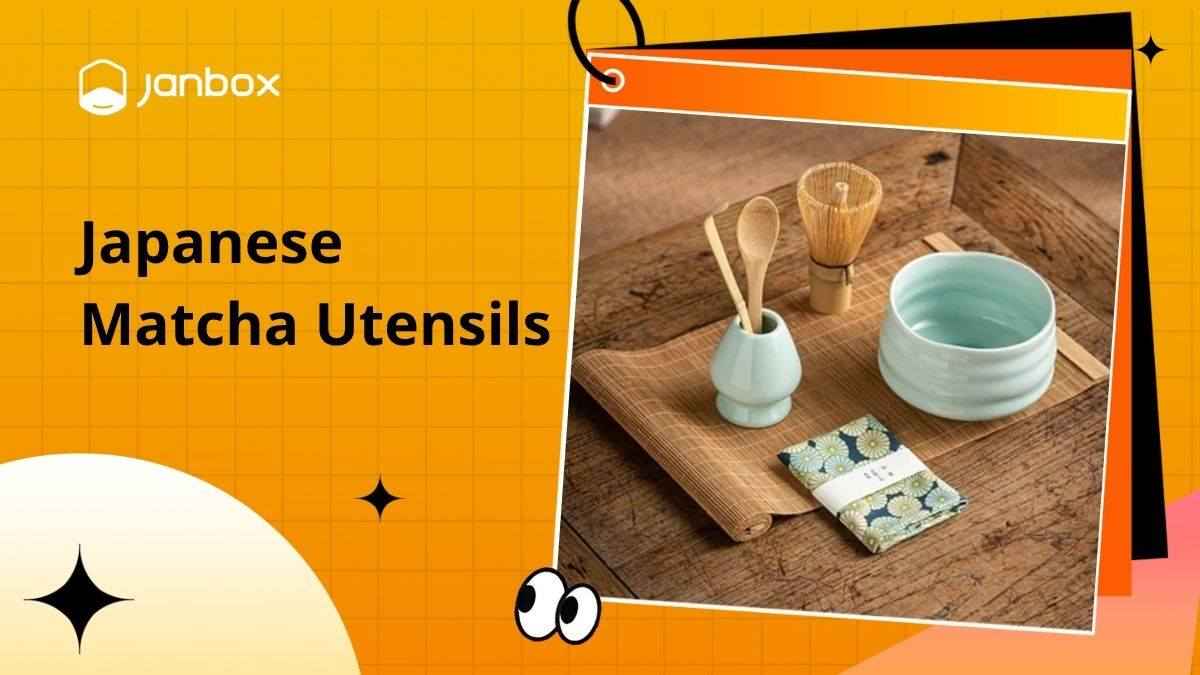The world of natural luxury holds few materials as revered and valuable as Agarwood, known globally as Oud or Aloeswood. However, within this niche, Japanese Agarwood—or Jinkō (沈香)—holds a status apart. It is not merely valued for its intense, complex fragrance, but for its central role in centuries of Japanese spiritual and cultural practices, epitomized by Kōdō (The Way of Fragrance).
This comprehensive guide will explore the rare origins, profound cultural history, detailed classification system of agarwood Japan, and examine why this precious wood commands such an extraordinary premium price globally, appealing equally to spiritual practitioners and high-end fragrance collectors.
1. What is Japanese Agarwood? Defining Jinkō
Agarwood is not ordinary wood; it is a precious, dense, resinous material formed through a rare natural process, often referred to as “nature’s condensed masterpiece.”
1.1. The Origin and Formation of Agarwood
Agarwood is formed as a defense mechanism within the heartwood of the Aquilaria tree. This process begins only when the tree is physically injured and subsequently infected by a specific mold (Phialophora parasitica). In response, the tree produces a highly fragrant, dark resin—Agarwood—which impregnates the lighter wood.
This process is fundamentally a rare natural anomaly. Only a small percentage of wild Aquilaria trees naturally produce the resin, contributing directly to its extreme scarcity and high value. Due to deforestation and habitat loss, the supply of high-grade wild Jinkō is critically scarce.

1.2. Distinguishing Jinkō (Japanese Agarwood)
While Agarwood is sourced across Southeast Asia, Jinkō (沈香) is the specific Japanese term for agarwood Japan and refers to the type of wood and sophisticated classification system favored by Japanese connoisseurs.
- Refined Scent Profile: Japanese experts grade Jinkō based on a distinct, highly refined, and often cleaner scent profile that minimizes smoky notes.
- Sensory Profile: Jinkō is classified based on subtle sensory notes appreciated when heated: bitterness (a highly complex and positive trait), deep sweetness, subtle spiciness, sourness, or saltiness. This detailed sensory classification system is a hallmark of Japanese appreciation.
2. A Cultural History: Agarwood’s Role in Japan
The history of Agarwood in Japan is deeply entwined with the nation’s spiritual and artistic development, establishing its identity as a sacred and artistic material.
2.1. The Introduction and Royal Adoption
Agarwood’s first documented arrival in Japan dates back to the 6th Century AD (Asuka period). It arrived via international trade routes, initially serving as a rare and precious material for the Imperial Court and for use in solemn Buddhist ceremonies.
The most famous piece of Agarwood in Japan is the Ranjatai, a huge, legendary log of Jinkō stored at the Shōsō-in treasury in Nara. This item symbolizes the material’s immense value and historical significance, often being cut into small pieces and distributed by the Emperor on rare, important occasions.
2.2. Kōdō: The Way of Fragrance
The most defining element of agarwood Japan culture is Kōdō (香道), or The Way of Fragrance. This is one of the three classical Japanese arts, representing a highly intricate, contemplative practice akin to the Tea Ceremony.
- Contemplative Practice: Kōdō involves heating small pieces of Agarwood to appreciate the complex, subtle fragrance (monkō – listening to the incense) in a quiet, mindful setting. The focus is on mental and spiritual appreciation rather than simply smelling a strong scent.
- Kumikō (Comparing Fragrances): This sophisticated game requires specialized knowledge to identify and compare different types and origins of Jinkō purely by scent, becoming a refined pastime of the elite during the Muromachi period.

>>> Read more: Discover the Best Japan Second Hand Luxury Bags In 2025
3. Japanese Agarwood Incense: The Heart of Traditional Scents
While raw Jinkō is used in Kōdō, Japanese agarwood incense is the most accessible and common way the fragrance is enjoyed today, crafted with superior purity and subtlety.
3.1. The Composition and Quality of Japanese Agarwood Incense
Japanese incense manufacturing is renowned for its refinement, strict quality control, and commitment to subtle fragrance:
- Clean Burn Technique: Unlike many lower-quality incense sticks, Japanese incense is traditionally manufactured without a bamboo core, and often blended only with precious natural ingredients like sandalwood, borneol, or spices. This technique ensures a clean, minimal burn that produces subtle, authentic fragrance rather than heavy smoke.
- Subtle Profile: High-quality Japanese agarwood incense is characterized by a refined scent profile that is meant to create a calm, sophisticated atmosphere and facilitate meditation without overpowering the senses.
3.2. Top Use Cases and Benefits
- Meditation and Ritual: Used extensively in homes and Buddhist temples for daily offering ceremonies, aiding concentration, and creating a sacred atmosphere.
- Home Fragrance: Employed to create a calm, sophisticated, and refined atmosphere (wa – 和) in high-end traditional and modern living spaces.
- Therapeutic Use: Believed in traditional Asian medicine to have calming and grounding properties, aiding relaxation, reducing stress, and promoting sleep.
4. Grading and Value: Why Agarwood Japan is Highly Priced

The immense value of Agarwood, particularly high-grade Jinkō, is driven by extreme scarcity, continuous demand, and an intricate Japanese classification system.
4.1. The Six Countries and Five Tastes (Rikokugomi)
The classification system used in Japan is one of the most sophisticated globally, used to grade Jinkō based on two main criteria:
- Origin (The Six Countries): Identifying the source country or regional characteristic (e.g., Kyara, Rakoku, Manaban, Sasora, Manaka, Sumontara).
- Sensory Profile (The Five Tastes): Classifying the scent based on its primary sensory notes when heated (monkō): sweet, sour, bitter, salty, and spicy.
- The Apex: Kyara (伽羅): This highest-grade Jinkō commands the most staggering prices globally. It is prized for its extremely complex, smooth, multi-layered, and long-lasting scent that is often described as transcendent and meditative.
4.2. Factors Driving High Prices
- Extreme Rarity: The natural formation of the resin is exceptionally rare, compounded by the time required (decades, sometimes centuries) for high-resin content to mature.
- Continuous Demand: There is continuous, high global demand from the Middle East (for Oud oils), China (for luxury incense and carvings), and Japan (for Kōdō and traditional medicine).
- Investment Value: High-grade Jinkō is often treated as an investment commodity, with its value appreciating significantly over time due to dwindling wild supply.
5. Buying Authentic Japanese Agarwood Incense via Janbox US
Acquiring authentic, high-grade Japanese agarwood (Jinkō) or Japanese agarwood incense from esteemed Japanese manufacturers is often impossible from outside the country. This is due to platform restrictions, payment barriers, and the necessity of specialized international shipping for high-value goods. Janbox US provides the crucial, dedicated solution for American customers.
Janbox US simplifies the complex process of sourcing high-value Japanese goods, acting as your seamless proxy buyer and international shipper.

Step-by-Step Guide for U.S. Buyers:
- Step 1: Search for Jinkō: Access the Janbox US platform and search for specific Japanese incense brands known for Agarwood (e.g., Shoyeido, Nippon Kodo, Kunjudo, or use the keyword Jinkō or Kyara). Janbox connects you to Japanese platforms like Rakuten and specialized craft shops.
- Step 2: Purchase & Consolidation: Place your order for your desired Japanese agarwood incense. Since Janbox offers free storage and consolidation, you can purchase multiple boxes of incense or even rare wood chips from different sellers and combine them into one secure, insured international package.
- Step 3: Specialized Packaging: Given the high value and fragility of fine incense, Janbox provides expert, protective packaging to ensure the delicate scent profile and physical integrity of the sticks or wood chips are preserved during transit to the US.
- Step 4: Global Delivery: Choose the appropriate shipping method (e.g., reliable FedEx/DHL for high-value items) and receive your genuine Agarwood Japan products safely at your US doorstep.
Benefits of Using Janbox US:
- Guaranteed Authenticity: You buy directly from official Japanese retailers, significantly mitigating the risk of counterfeit products common in the global incense trade.
- Access Rare Inventory: Gain access to specialized, limited-edition Japanese agarwood incense lines and rare wood chips not sold through US distributors.
- Cost Efficiency: Consolidating multiple lightweight but highly valuable incense packages drastically reduces the total international shipping costs.
>>> Read more: Tips For Successfully To Bid on Antiques on JDirectitems Auction
6. Conclusion
Japanese agarwood (Jinkō) holds a unique and revered position in global luxury and spiritual markets, defined by its sophisticated historical role in Kōdō and its refined, classified quality.
Whether you are an enthusiast seeking spiritual depth, a practitioner engaged in mindful meditation, or a high-end collector, exploring Japanese agarwood incense provides a direct, sensory link to one of Japan’s most profound and treasured cultural traditions. Investing in authentic agarwood Japan products is an investment in unparalleled quality, history, and a truly transcendent fragrance experience.
Website: https://janbox.com
Email: [email protected]









